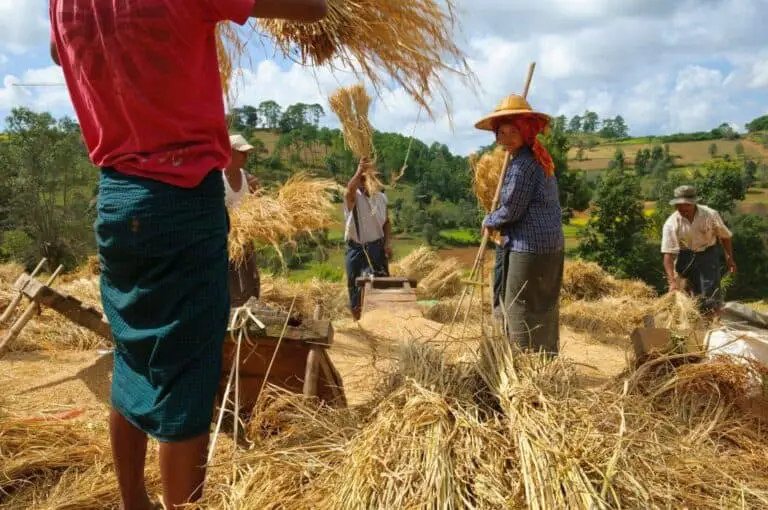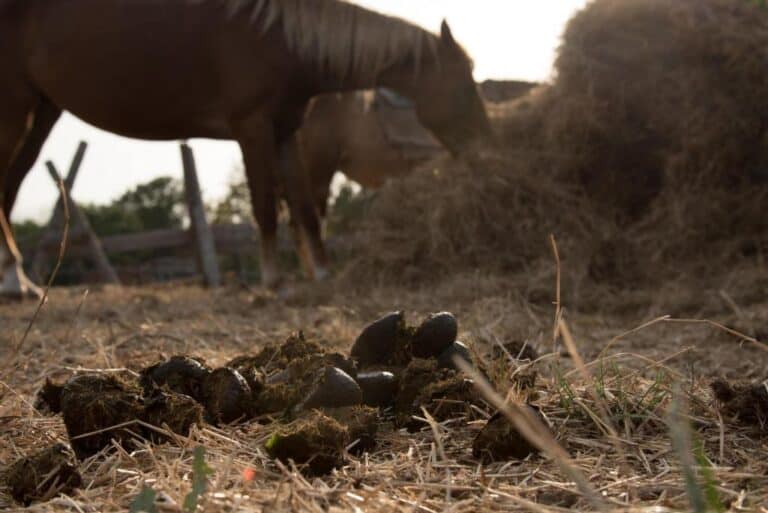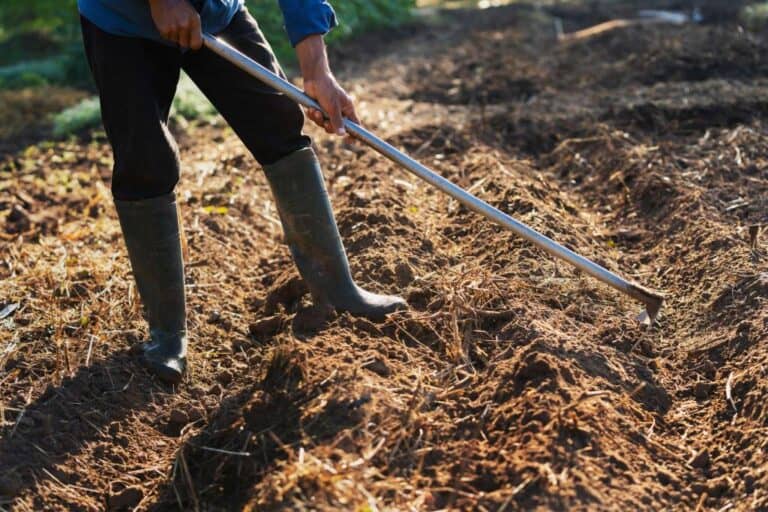The Efficient Ways to Use Compost Horse Manure for Your Garden
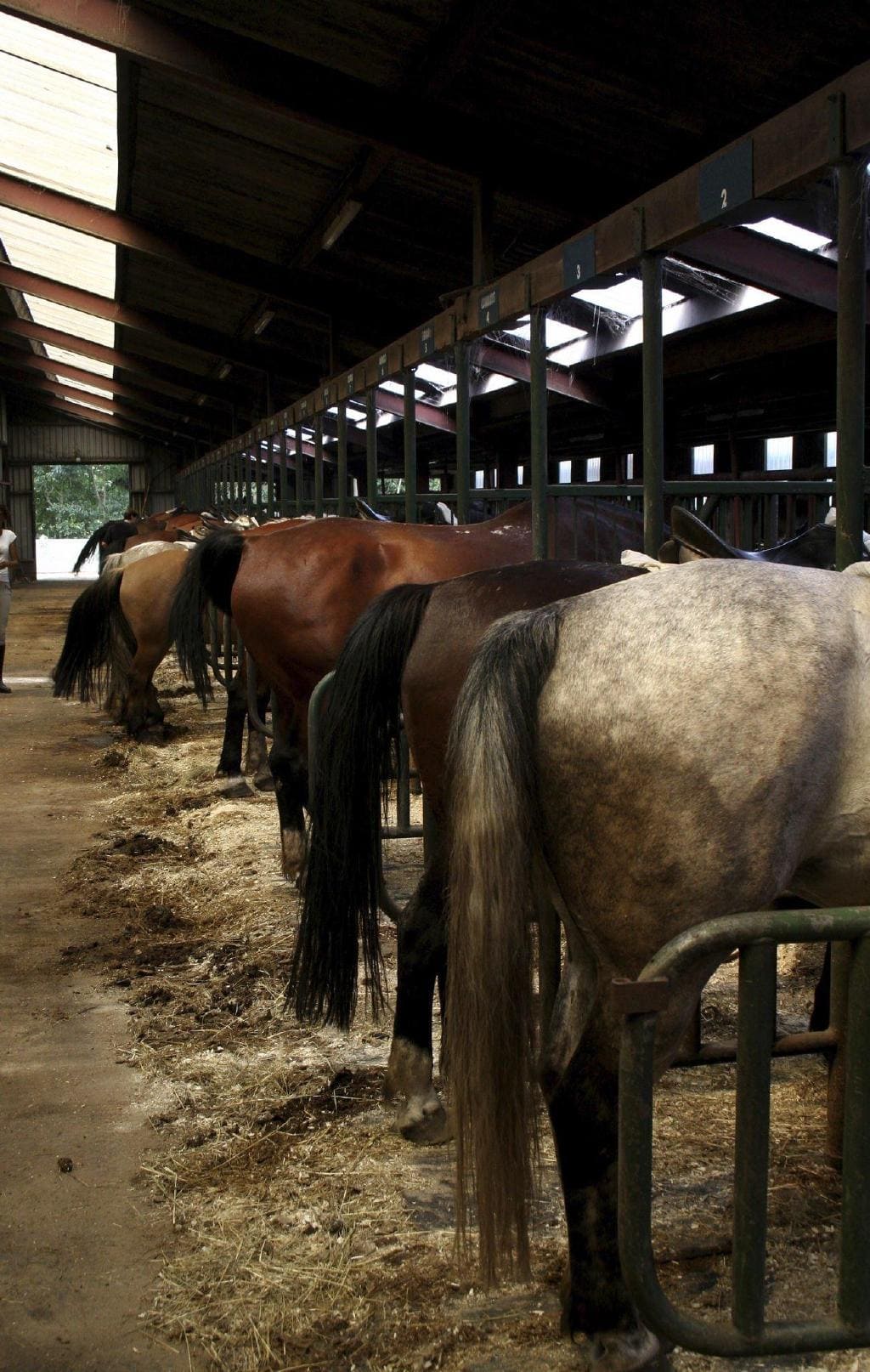
Horse manure may be abundant. However, when left untreated, it can pose a serious environmental threat. This is due to its high levels of nitrogen and phosphorus. This makes effective composting of horse manure an essential practice for equestrians and anyone seeking sustainable gardening solutions.
Why is fast composting advantageous? First, faster decomposition means you can quickly turn that mountainous pile of horse droppings into nutrient-rich compost. It’s ready to nourish your plants. Rapid composting also helps eliminate potential odors. It diminishes the risk of attracting flies or other pests commonly associated with decomposing organic matter.
This article will provide invaluable tips on quick and proper composting methods. You’ll learn how to efficiently turn horse manure into black gold without long waiting periods or arduous efforts.
Discover new strategies. They’re designed to optimize decomposition rates. Also, aim to maximize nutrient retention in organic waste.
Preparation Before Composting Horse Manure
Selecting the Right Location:
When it comes to composting horse manure, location is key. Choose a spot in your yard or property that is easily accessible but also provides sufficient drainage. Avoid placing your compost pile too close to water sources or structures, as the decomposition process can produce odors.
Gather the Necessary Tools and Materials:
To successfully compost horse manure, you’ll need a few essential tools and materials. First, consider using a compost bin or creating a three-sided enclosure with wire mesh or wooden pallets to contain the pile. This helps maintain proper airflow and keeps critters out.
In terms of materials, aim for an equal balance of carbon-rich (brown) and nitrogen-rich (green) components. Carbon-rich materials include straw, dry leaves, sawdust, and wood shavings. They provide structure and absorb moisture from the pile. On the other hand, nitrogen-rich ingredients like fresh bedding or grass clippings are high in nutrients that aid microbial activity during decomposition.
Don’t forget to have a water source! Composting relies on moisture to break down organic matter efficiently. If rainfall is unreliable in your area or if you’re experiencing drought conditions, ensure there’s access to water nearby. This way, you can periodically wet down your compost pile.
With these preparations in place—from choosing an appropriate site to gathering the necessary tools and materials—you’ll be ready to dive into speedy horse manure composting!
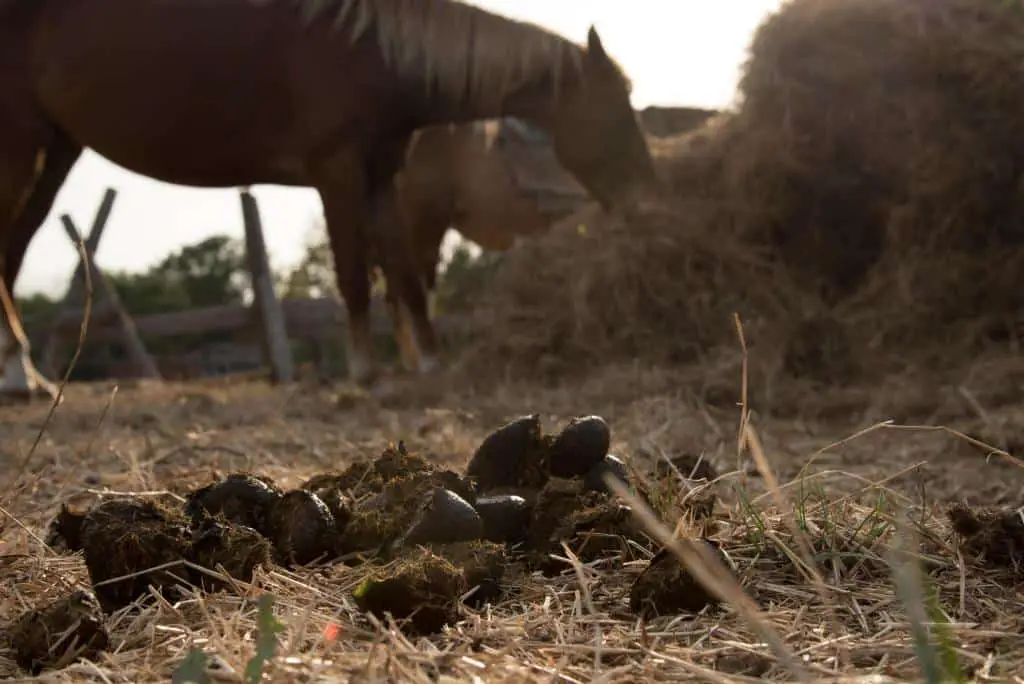
Managing Manure
Collecting and managing fresh manure daily is a crucial step in the composting process. By regularly removing manure from stalls or paddocks, horse owners can prevent odor problems, insect infestations, and the potential spread of parasites.
One effective method for collecting manure is to use a pitchfork or shovel to scoop it into a wheelbarrow or designated pile. It’s important to wear gloves and protective gear while handling manure to maintain hygiene.
In addition to regular collection, choosing the right bedding material can significantly impact the speed of decomposition. Bedding options such as straw, shavings, sawdust, or wood pellets all have different properties that affect how quickly they break down.
For faster composting results, consider using materials like wood pellets or fine wood shavings. They have a higher carbon-to-nitrogen ratio compared to straw. The higher carbon content helps balance out the nitrogen-rich horse waste and speeds up microbial activity during composting.
Remember that cleanliness plays an essential role in managing manure effectively. A clean environment promotes better health for your horses. It also improves compost quality by minimizing the presence of unwanted materials like rocks or excess bedding that may slow down decomposition. So be sure to remove any non-compostable items before starting your compost pile.
Carbon-Nitrogen Balance:
Maintain a balanced carbon-to-nitrogen ratio (C:N) by adding carbon-rich materials like straw or sawdust to balance the nitrogen content in horse manure. A C:N ratio of 25-30:1 is optimal for speedy decomposition.
To achieve rapid decomposition of horse manure, it is crucial to strike the right balance between carbon-rich materials (browns) and nitrogen-rich materials (greens).
The carbon-nitrogen ratio plays a vital role in composting as it affects the speed at which organic matter breaks down. When these two elements are in proper balance, microorganisms responsible for decomposition can work efficiently.
When it comes to browns, straw is an excellent choice for horse owners. It provides the necessary bulk and structure, allowing airflow throughout the compost pile. Additionally, wood shavings, sawdust from untreated wood, or wood ash can also be used as effective brown materials.
Greens, on the other hand, supply the nitrogen and moisture required by microorganisms. Grass clippings obtained from areas free of pesticides and herbicides make an ideal green source for composting horse manure.
Aeration and Watering
Proper aeration and watering are essential elements in speeding up the decomposition process of horse manure. During composting, microorganisms break down the organic matter in the manure, but they require oxygen to thrive. Regularly turning or aerating the compost pile helps supply this crucial oxygen.
Turning the pile every few weeks is key to ensuring that all parts of the manure come into contact with oxygen. This simple act promotes microbial activity and accelerates decomposition. As you turn your compost heap, you’ll notice an increase in heat, indicating that aerobic bacteria are working their magic.
While aeration is vital for efficient breakdown, it’s equally essential not to overlook proper moisture levels. Adequate watering can help maintain optimal conditions for decomposition without creating a soggy mess. The compost pile should be moist like a damp sponge—not excessively wet nor too dry.
If your pile becomes too dry, add water using a sprinkler or hose; if it becomes too wet, incorporate additional browns (such as straw or leaves) to absorb excess moisture and prevent compaction.
Monitoring Adjustments
To ensure optimal composting conditions, it is crucial to monitor the internal temperature, moisture level, and odor of your horse manure compost pile regularly. By doing so, you can make the necessary adjustments for faster decomposition and avoid potential issues.
Temperature Monitoring
First, keep an eye on the internal temperature of the compost pile. A thermometer inserted deep into the pile will help gauge its heat levels. The ideal range for successful decomposition is between 120°F (49°C) and 160°F (71°C). If the temperature falls below this range, consider turning or aerating the pile to introduce more oxygen. This will promote microbial activity and increase heat generation.
| Also see: What Is Soil Sterilization Baking Temperature? |
Moisture Level
In addition to monitoring temperature, check the moisture level of your compost pile using a moisture meter or simply by feeling it with your hands. The ideal moisture content should be around 50-60%.
If it feels too dry, consider adding water periodically during dry spells or when turning the pile. Conversely, if it’s excessively wet and resembles a soggy mass instead of loose organic matter, mix in some dry carbon-rich materials, such as straw or wood shavings, to improve air circulation.
Odor Control
Odor can also serve as an indicator of how well your manure is decomposing. An earthy smell indicates active aerobic decomposition, while a foul odor suggests that anaerobic bacteria dominate due to inadequate oxygen supply.
Troubleshoot this issue by ensuring proper aeration through regular turning or mixing fresh manure with finished compost that provides beneficial microbes responsible for breaking down odorous compounds.
| Related: Why Does My Potting Soil Smell Like Poop or Manure? |
Time Frame
Composting horse manure is a process that requires time and patience, but with the right techniques, you can speed up each stage of decomposition. The first stage, initiation, typically takes around one to two weeks.
During this time, microorganisms begin breaking down the organic matter in the manure. Adding a nitrogen-rich material like grass clippings or kitchen scraps can also kickstart decomposition.
Once active decomposition begins, it usually lasts for about three to six months. This is when the pile heats up as microorganisms break down organic compounds further.
To enhance this phase, maintain optimal conditions by regulating moisture levels (aiming for dampness similar to a wrung-out sponge) and turning your compost pile regularly—ideally once a week—to prevent anaerobic pockets from forming.
The final stage of composting is curing or maturing, which typically lasts several months to a year, depending on environmental conditions and how thorough you want your compost to be.
While waiting for complete maturity may not fit everyone’s timeline, don’t rush this step if you plan on using the finished product in sensitive areas such as vegetable gardens or potted plants, as uncomposted materials may compete with plants’ nutrients or cause nutrient imbalances due to their high ammonia content.
Compost Accelerators for Horse Manure
Compost accelerators, also known as compost activators, are substances that help speed up the decomposition process in a compost pile. They typically contain a high amount of bacteria and fungi, which are essential for breaking down organic matter.
Horse manure is a common and effective compost accelerator due to its high nitrogen content and the presence of microorganisms like bacteria, which are vital for the decomposition process. However, it’s important to note that horse manure may not be the best choice if it contains pesticides or undigested seeds. Additionally, adding humic acid to horse manure can act as a compost accelerator by stimulating microbial activity and aiding in the decomposition process.
Other commercial compost accelerators are available for purchase, but making a homemade compost accelerator using animal manure is a cost-effective and sustainable alternative. It’s essential to maintain the right balance of carbon and nitrogen, moisture, and aeration in the compost pile to ensure the effectiveness of the accelerator.
Application of Compost Horse Manure for Your Garden
Once your horse manure has fully decomposed into nutrient-rich compost, you can reap the rewards by using it in your garden as a natural fertilizer. The application of finished compost provides numerous benefits to your plants and soil.
It improves soil structure, allowing for better water retention and drainage while also promoting aeration for root development. Additionally, adding compost to your garden can increase nutrient availability for plants, leading to stronger growth and higher yields.
To use the finished compost effectively in your garden, start by determining the appropriate amount needed based on the size of your plot or beds. A general guideline is to apply one to two inches of compost over the topsoil before planting or during growing seasons. Gently rake or till it into the existing soil without disturbing the plant roots.
By using horse manure compost instead of synthetic fertilizers, you’re taking an important step towards sustainable gardening practices. Compost enhances overall soil fertility over time and reduces reliance on chemical inputs that can harm beneficial organisms and have negative environmental effects when washed off during heavy rainfall.
Conclusion
In conclusion, composting horse manure can be a speedy and effective process when done correctly. By following these steps and implementing efficient techniques, you can quickly turn equine waste into nutrient-rich compost for your garden or other landscaping needs.
By incorporating composted horse manure into your gardening routine, you are contributing to sustainable practices by recycling organic material and enriching the soil naturally. This reduces the need for chemical fertilizers that can harm beneficial organisms in the soil while promoting healthy plant growth.
So why wait? Start composting your horse manure today and reap all the benefits—from saving time and money to improving environmental sustainability! Remember: every pile of well-managed horse manure brings us one step closer to a greener future.
So next time you see those vibrant blooms or plump vegetables growing in your garden bed, nourished with horse manure compost – take pride! You’ve not only managed waste efficiently but also contributed positively towards healthier plants, soils, and ultimately a greener planet.


